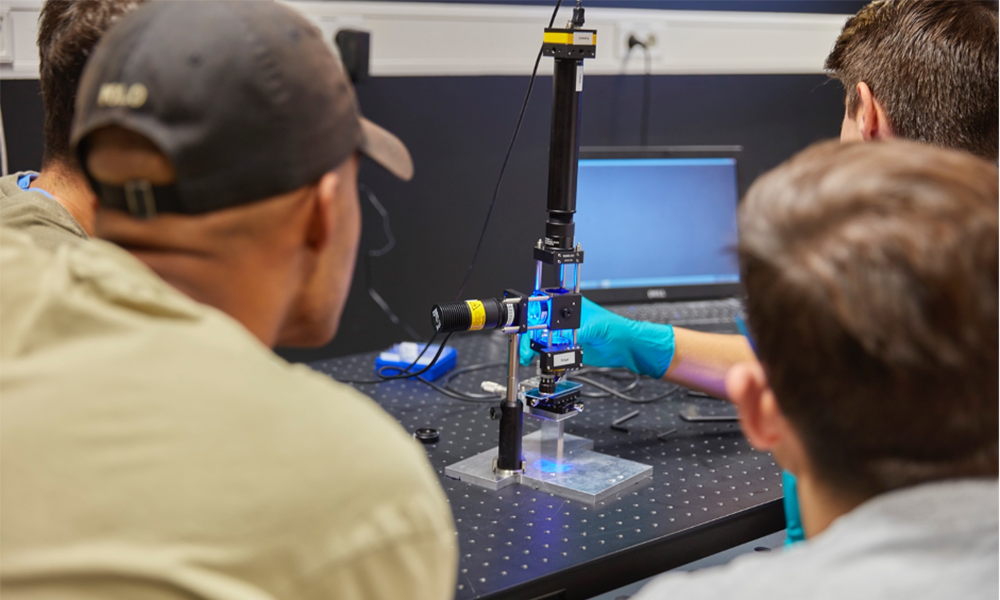Seeing more, learning more
An EMBL-developed kit introduces hands-on fluorescence microscopy to secondary schools.

Imagine a science class where students could take thin slices of carrot doused with a bit of turmeric and ethanol and suddenly see cellular structures outlined in fluorescent green.
A new fluorescence microscopy kit is allowing students to see just that and more as they are now able to view what they previously couldn’t with traditional light microscopes. And, because students actually are building these microscopes from individual parts themselves, they also learn the inner workings and physics concepts underpinning fluorescence microscopy – something usually reserved for biophysicists.
Now a standard practice in the life sciences, fluorescence microscopy revolutionised what scientists could see and mark in specimens, allowing them to hone in on specific components.
However, despite its central role in contemporary research, fluorescence is not typically covered in secondary school curricula, with few hands-on “entry-level” materials available to secondary school teachers to introduce this important method to students. Furthermore, most commercially available fluorescence microscopes are prohibitively costly and often appear as “black boxes” whose inner workings are mysterious.
In collaboration with Robert Prevedel and his group, EMBL’s European Learning Laboratory for the Life Sciences (ELLS) helped create this low-cost, research-grade fluorescence microscopy kit and comprehensive educational resource that combines concepts from both optics and biology. Microscope in Action (MiA) offers ready-made slides and activities that range from preparing and observing samples to analysing data.
“In addition to using the microscope, they are building it,” said Shweta Gaikwad, an ELLS education officer. “Microscope in Action employs active learning that accelerates the learning process and infuses participants with excitement.”
In 2021, the team around the project published a paper in The Biophysicist, recounting the approach to creating this resource.
“While MiA is primarily aimed at secondary school students, the educational resource is very versatile. It’s actually been used at science festivals, in teacher training courses, and even as an introduction for PhD students here at EMBL,” said Agnes Szmolenszky, head of ELLS. “What teachers and trainers appreciate is how it highlights interdisciplinarity and the interconnectedness of scientific thinking – something increasingly valued in today’s research environment.”
“The school bell rang and no student wanted to leave the room for the break. A very special moment indeed. The spirit of scientific discovery fully taking over!”
– Agnes Szmolenszky, Head of ELLS
“Working closely with teachers and their students through ELLS was truly rewarding – I still vividly remember their excitement when they saw their first fluorescent samples light up under the microscope.”
– Robert Prevedel, Group Leader, EMBL Heidelberg

“Contributing on the procurement side to EMBL’s public engagement activities has been both unique and exciting for me. Clearly, everyone plays a role in public engagement!”
– Evelyne Cudraz, Head of EMBL Purchasing


